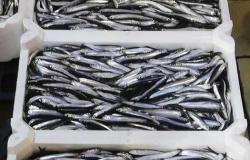Extinction Rebellion occupied the courtyard of Intesa Sanpaolo’s Gallerie d’Italia on the day of the shareholders’ meeting, to denounce the bank’s massive financing of oil and gas projects. With them black drapes and colored balloons tied to a globe, while a banner reads “Intesa Sanpaolo: how many balloons to fly away from the fossil?”.
This afternoon, in Turin, around twenty people linked to Extinction Rebellion occupied the Gallerie d’Italia in Piazza San Carlo, the Intesa Sanpaolo museum, where they spread black cloths on the ground and displayed a globe to which many were linked colorful balloons. There was also a banner hanging reading “Intesa Sanpaolo: how many balloons to fly away from the fossil?”.
The balloons are a reference to the animated film “Up”: «These balloons should bring the Earth and those who live on it out of the sea of oil financed by Intesa» explains Matilde “but in reality they are like the measures adopted so far: useless to avert the eco-climatic chaos into which we are heading.” The protest takes place on the same day as the Intesa shareholders’ meeting and a few days before the start of the G7 Climate, Energy and Environment meeting which will be held in Turin. The objective is to denounce Intesa Sanpaolo’s massive financing in oil and gas extraction, exploration and trading projectsin which the G7 governments – including Italy – are investing.
«Although Intesa Sanpaolo declares itself a green bank, the numbers say something else: it is the Italian fossil bank par excellence.» declares Scarlett. As reported in the latest ReCommon report, from 2016 to today, Intesa Sanpaolo has allocated over 22 billion dollars to the fossil fuel industry, making it in the list of the top 40 banks worldwide that finance the expansion of multinationals operating in the sector. In addition to the environmental consequences, several projects financed by the bank are considered controversial for the social impacts in the areas affected: this is the case of the Rio Grande LNG, in Texas, where the release of toxic substances could have serious consequences on an already tragic situation at healthcare in the region; or Eni’s Coral North, in Mozambique, where the population lives in a spiral of crisis and violence, also linked to the availability of resources. The latter, currently in the approval phase, is also one of the so-called “climate bomb” projects, i.e. with the potential to emit over one billion tonnes of CO2.
«Today, Intesa shareholders are meeting behind closed doors, with a huge deployment of law enforcement preventing anyone from approaching” continues Matilde again, in reference to the meeting in progress at the Sanpaolo Skyscraper. «While red zones are being set up to separate political and economic decision makers from citizens, the Earth and the common people who inhabit it are left defenseless, sinking into a climatic and environmental red zone». The reference is to the red zone announced for the G7 which will be held in Venaria Reale from 28 to 30 April.
The Gallerie d’Italia are currently hosting the photographic exhibition “The Great Wisdom” by Cristina Mittermeier, in collaboration with National Geographic, on the topic of environmental protection. «A paradox, given that it is precisely the financial policies of banks like Intesa Sanpaolo that are causing the devastation of the ecosystems exposed here» he concludes Scarlett.






